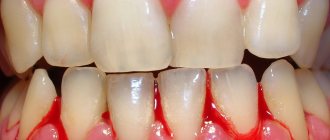Vaginal discharge is a mandatory physiological process, which is the norm, provided that the leucorrhoea is odorless and has no foreign color. According to the characteristics of leucorrhoea, one can tell about the woman’s health status and possible ongoing processes, for example, discharge during conception will differ from leucorrhoea necessary for natural lubrication or menstruation. The delay or absence of the latter may also indicate pregnancy. This phenomenon often brings anxiety and this is natural, because changes occur in the body, so it is important to know the nature of the discharge after ovulation if conception has occurred.
What day does conception occur after ovulation?
The body system responsible for a woman’s reproductive function has its own operating principle. Once a month she prepares for fertilization and the future birth of a child. Menstruation is part of this preparation for ovulation, and a woman’s ability to give birth to a child depends on it.
Ovulation is a natural physiological process after which conception occurs.
To find out the time when conception occurred and plan the day in advance, the girl must have a regular cycle and keep a special menstruation calendar.
There are reasons why ovulation may occur later:
- A history of chronic diseases or past pathologies.
- Taking medications.
- Acclimatization.
- Overexcitement or stressful situations.
- The presence of cystic neoplasms in the pelvic organs.
- A sharp change in the temperature regime of the external environment.
To better understand the process of conception, it is necessary to know how long the egg and sperm are active. A woman’s reproductive cell lives no more than a day, unlike a man’s – the activity of which can last for several days.
Fertilization must take place within 24 hours, since the lifespan of the egg is one day. If it does not happen, the female cell dies and fertilization does not occur.
https://youtu.be/xtH-wMPRF8o
On what days of the cycle can you get pregnant?
A woman ovulates once during her menstrual cycle. This is a natural process, without which it is impossible to conceive a beautiful baby. Most often this period falls in the middle of the cycle.
It all starts from the first day of your period. First, a dominant follicle is formed, in which the egg is “born”. When its growth reaches its peak, the egg is “released.” Its path passes through the fallopian tubes to the uterus. It is this short moment that is considered ovulation. For couples who want to conceive a child, it is worth catching this moment.
Further, the life of the egg depends on the meeting with the sperm. If the meeting does not occur, after 24-48 hours it dies. If the rendezvous has taken place, the merging of two bodies into one takes place, that is, fertilization of the egg occurs.
Considering that sperm can live in a woman’s body for up to 4 days, you need to have sex before ovulation. To determine day X, you can use special tests purchased at the pharmacy, or use the method of measuring basal temperature.
To increase the chance of getting pregnant, gynecologists recommend having sex every two days. During this period, the “nimble guys” regain their full strength and one of them will hit the target.
What kind of discharge after ovulation if conception occurs
Discharge after ovulation, if conception has occurred, may not differ from normal leucorrhoea during the fertile period. The only difference may be a thicker discharge, reminiscent of the white of a raw egg, and its quantity may increase significantly.
The appearance of bloody discharge along with mucus, if conception has not occurred, may mean rupture of the follicular sac and the onset of a period when the chance of conception is highest.
Provided that the girl keeps a special calendar and knows the date of ovulation, measuring basal temperature values helps determine cell fusion. In the first phase of the cycle, the indicators reach 36.5 degrees, during the ovulation period up to 37.3. If there is pregnancy, there is a noticeable decrease and then an increase in temperature.
In the absence of fertilization, the temperature does not change.
Features of leucorrhoea in the first time after conception:
- Large volume of discharge.
- Thickness and viscosity.
- The color of the whites ranges from transparent to beige, without inclusions of other shades.
Pathology may be indicated by a foreign odor or the presence of various clots and lumps in the leucorrhoea; they may indicate the development of inflammation and other abnormalities. If left untreated, there is a risk of miscarriage or complications in the future.
Why is this happening
Bloody discharge during this period is a sign of good fertility. They occur in the middle of the menstrual cycle, when a mature egg is released from the ovary and begins to move towards the fallopian tube, preparing for fertilization.
There are two reasons why blood is released during ovulation:
- Release of the egg from the follicle
For ovulation to occur, LH intensively acts on the surface of the follicle located in the ovary. Its wall weakens, and the egg can be released freely. This may cause some blood to come out. Minor bleeding also occurs when the follicle wall is completely destroyed when the egg begins to move through the tube. This discharge is what most women notice during ovulation as vaginal fluid mixed with blood.
- Changes in hormone levels.
In other cases, bloody discharge during ovulation may be caused by changes in hormonal levels in the female body. When the reproductive system is preparing for the release of a mature egg, the level of estrogen increases. They stimulate the release of LH, which causes ovulation. However, in some cases, after a sharp decrease in estrogen levels that occurs after ovulation, progesterone levels increase too slowly. During this time, there may be some bleeding until progesterone levels reach normal levels.
If the blood released is not scarlet, as during normal periods, but brownish or pinkish, this is not a cause for concern. This is usually due to the remnants of bloody discharge from the previous menstruation, then a brown tint appears. If the blood is diluted with the “egg white” of the cervical fluid, the discharge appears pink.
The intensity of the discharge can vary: from a few drops to minor bleeding. They last 1-2 days and should not be a cause for concern.
Discharge during fertilization of an egg changes by day
When conceiving, you may notice changes in the nature of the leucorrhoea with each subsequent day.
How does the discharge differ depending on the days from which conception occurred:
- On the first day they are liquid and have a large volume, have no color or are slightly whitish.
- On the second day, the liquid may become thicker.
- Usually there is a discharge with a creamy consistency that is odorless and small in volume.
- On the fourth day, the discharge is the same as on the third.
- From the fifth to the seventh day, the fertilized egg enters the uterus; pregnancy occurs if the embryo is attached to the uterine mucosa.
If foreign inclusions appear in the leucorrhoea or an unpleasant odor, it is recommended to consult a gynecologist to find out the reasons.
Character of discharge by day
If conception has occurred, then normal discharge on days 2-3 after ovulation will be less abundant than during fertilization of the egg. The female body does not need a large amount of vaginal secretion after ovulation; in any case, there will be less discharge. The color of the discharge is white or yellowish, transparent or slightly beige. The watery consistency after the “decisive” sexual intercourse with successful conception gradually changes to a thicker one.
Discharges that have a heterogeneous structure, admixtures of blood, pus, greenish and grayish discharge are considered abnormal. They may indicate the presence of an infection and possible conception cannot change their character in any way. But the infection can radically change the course of pregnancy in its very first days. If there is an infection, the fertilized egg may not implant in the uterine cavity or may not implant properly.
So, in the first day after ovulation and possible conception, the discharge remains abundant and watery. On the second or third day, the discharge becomes less. For some women, they can practically disappear and there will not even be a trace on the panty liner.
On the fourth day, the egg is halfway to the uterine cavity, it is also a zygote and is intensively fragmented. The vaginal secretion at this stage is quite scanty, creamy, and odorless. From the fifth to the sixth day, progesterone actively affects the uterine endometrium, which, under the influence of the hormone, thickens and becomes more loose. Discharge on these days is no different from discharge on the third or fourth day after ovulation.
Implantation occurs on days 8-9. This is a very delicate moment; it is on these days that it is decided whether to have a full-fledged pregnancy. In about a third of cases, unfortunately, it does not occur. The blastocyst (this is what the fertilized egg is now called) cannot always successfully attach to the wall of the uterus. It can be prevented by inflammatory or infectious diseases, increased tone of the uterus, scars on the walls of the main reproductive organ, and hormonal imbalances. Also, the blastocyst may not have sufficient levels of enzymes necessary to “introduce” into the uterine wall. This is typical for embryos with gross chromosomal pathologies that are virtually non-viable.
It is during the implantation period that nature itself carries out natural selection, deciding whether there will be a child, whether it can develop further. Neither the woman nor the doctor can influence the likelihood of successful implantation. This is beyond the scope of human competence.
If the question of the future fate of the embryo is resolved positively, on days 8-9 the woman may feel the first changes in the nature of vaginal discharge. She may notice bloody spotting on the pad, scanty and insignificant. This is the very first and early sign of pregnancy, which is called “implantation bleeding.” Blood, ichor, pinkish creamy discharge - all these are options for such bleeding.
A little blood may be released due to disruption of the integrity of small blood vessels when the blastocyst penetrates the uterine wall. Implantation occurs at 3 weeks of pregnancy and there are no inaccuracies here. Obstetricians simply measure the gestational age from the first day of the last menstruation. Ovulation thus occurs at 2 weeks, and tests will begin to show the second line no earlier than 4 full weeks (which corresponds to the first days of the start of the delay).
It should be noted that implantation bleeding may be accompanied by additional sensations - a slight rise in body temperature, a feeling of chills. Some women mistake this bleeding for a hormonal imbalance or premature menstruation. However, within a day, the brown or bloody scanty discharge disappears without a trace.
After implantation, the nature of the discharge may change. Regardless of whether it was accompanied by slight bleeding or not, on the 10-11th day after ovulation, the discharge becomes even thicker. In some women, they acquire a pronounced yellowish-lemon tint. This is due to an increase in the concentration of progesterone, the task of which at this stage is to promote the softening of the uterine muscles, which will allow the embryo to develop more organically.
The chorion at the site of attachment of the blastocyst will subsequently become the placenta. In the meantime, it begins to produce a specific hormone - human chorionic gonadotropin (hCG). The hormone will increase approximately twice as much every two days, and during this period, until the delay, discharge from the genital tract can be quite scanty, slightly increasing in volume only a couple of days before the expected day of the next menstruation.
Under the influence of hCG after ovulation, some women may theoretically begin to feel the first symptoms of pregnancy - mild nausea in the morning, dizziness, chills and a slight increase in body temperature in the afternoon or evening, severe thirst or lack of appetite. Toxicosis as such usually does not occur at such an early stage and all the described sensations are mildly expressed. Most women who are unaware of conception because they did not plan the pregnancy do not even pay attention to them.
4-5 days before the start of the next menstruation, a woman may notice that the discharge not only begins to roll up, but also begins to itch. Strange as it may sound, thrush is sometimes the first sign of pregnancy - this is how women’s immunity expresses its “protest” against the beginning of large-scale changes in the female body, because a huge number of global restructuring processes are taking place in it.
What does the color of discharge say after conception and before menstruation?
A woman’s vaginal discharge may change depending on hormonal levels, pregnancy or menstruation, and also indicate possible diseases. That is why you need to be careful about the nature of the discharge; it can be a symptom of a deviation or indicate the development of various physiological processes.
White discharge after conception and in the second half of the cycle
White mucus discharged after conception is normally homogeneous and does not cause discomfort or pain in intimate areas. Over time, such secretions form a plug that protects the cervix from infection.
Beige or brown
The formation of beige or brownish discharge during conception may be one of the options for the normal course of pregnancy. They are often associated with bleeding inside the implant and because of this they have such a shade. It occurs as a result of disruption of the endometrium by the fertilized egg.
As a result, small vessels are damaged, and cervical mucus takes on this color.
White curds
Leucorrhoea, which has a characteristic smell of sour milk and inclusions in the form of lumps or flakes, is the first symptom of candidiasis. This pathology can be accompanied by itching and discomfort in the intimate area, causing redness and swelling of the vaginal mucosa. This fungus tends to quickly spread over the entire surface of the genital organ, significantly worsening the patient’s quality of life. Thrush requires prompt treatment to avoid complications and the spread of the fungus.
Green and yellow discharge
Traces on underwear from leucorrhoea of a yellow or green hue are not normal and indicate the presence of inflammation, provided the color is saturated.
Sometimes yellow mucus may be released before a missed period; it is not necessarily a sign of conception, but there is a possibility of fertilization.
Transparent secret
At any period of the cycle, you can notice a clear discharge; as a rule, this is a normal phenomenon. Mucus may become thicker after ovulation.
Red brown pink
Mucus that is red, brown, or pinkish in color may be normal with implantation bleeding. Other causes require therapy and are not natural.
Bleeding
Often, bleeding from the genitals is a dangerous symptom if we are not talking about menstruation. The most dangerous complication may be ectopic pregnancy, which requires immediate surgical intervention, as well as cancer, polyps, endometriosis, vascular pathologies and STDs.
Watery
Clear discharge that resembles water is one of the first signs of pregnancy. Normally, they should not have any foreign odor and should not cause discomfort to the woman.
Discharge during ovulation
Often women are able to determine ovulation by their own condition. Ladies who have carefully studied the behavior of their body, in particular the reproductive system, can find out when ovulation occurs by their self-feelings.
During this period you may experience:
- Increased libido;
- Breast hypersensitivity;
- Slight pain in the side of the abdomen on the side where the egg and others came out.
Another sign is discharge. During ovulation, they become stretchy, transparent, more abundant, and sometimes watery. Many people compare this mucus to egg yolk.
It happens that the discharge takes on a certain shade:
- Yellowish;
- Pinkish;
- Beige;
- Interspersed with blood or streaked with blood;
- Or there will be a bloody smear.
All this is considered the limit of the norm and you should not be afraid of them. Such processes can drag on for several days, but if the discharge continues for more than 5 days, this may indicate a pathological condition that requires additional help from a specialist.
What is implantation bleeding
Implant bleeding refers to discharge that appears after conception, approximately 5-6 days after fertilization.
With this phenomenon, the color of the mucus may be yellowish, brown, pink or red. The duration should not exceed 3 days, the discharge should not have a large volume.
If the bleeding is prolonged and the discharge has a significant volume, you should consult a doctor for symptoms of intrauterine bleeding.
Is pregnancy possible if there is no secretion?
Mucus may be absent after ovulation - this is not a pathology. Each organism is structured differently and has its own characteristics, this is the main reason for this phenomenon. Hormones often influence the characteristics of the secretion; their deviation from normal values can manifest themselves in the mucus discharged from the genitals.
In most cases, the secretion is still present and watery mucus appears before menstruation.
Typically pregnancy is accompanied by the following symptoms:
- Frequent urge to urinate.
- Pain in the abdomen and chest.
- Drowsiness and constant fatigue.
- Changes in behavior and eating habits.
With a high probability, conception will be determined by a special test or a trip to the antenatal clinic.










